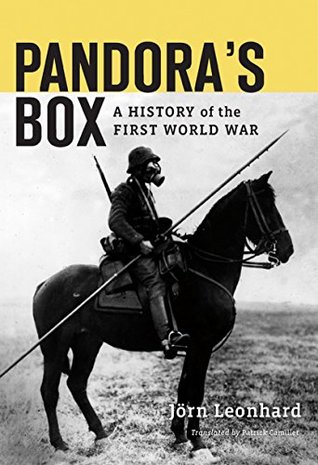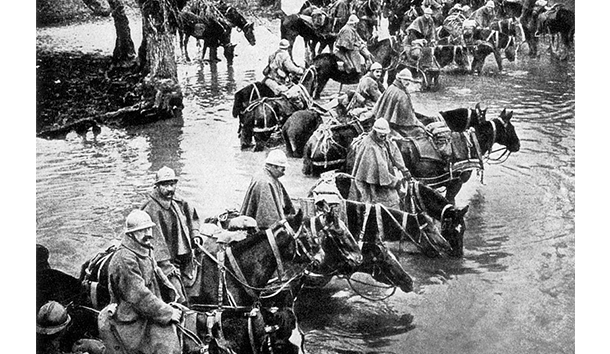Two questions immediately suggest themselves regarding this work: Who was (or is) Pandora (and her box), and do we really need yet another book on World War I, detailing its causes, alliances, generals, battles—replete with maps, photos, charts and so forth? Yes, 2018 is the 100th anniversary of the war’s end (November 11, at 11:00 a.m., Central European Time, to be precise). The answer to the first question needn’t be revealed, as Chronicles’ readership is familiar with the works of Hesiod, but suffice it to say that Pandora’s box has come to mean any source of great and unexpected troubles. I will treat the answer to the second question later in this review.
Much of the history of the 20th century was set in motion by the aftermath of the First World War. Four great empires marched off into history, and a fifth, the British, was saddled with crushing debt. And even though the Great War was fought on land in Europe, Asia, and parts of Africa, and at sea in the North Atlantic, it claimed over 16 million lives, both civilian and military. It was not a true world war by comparison with the one that followed it, but the devastation it caused was unprecedented.
This book’s author, Jörn Leonhard, is a professor of West European History at the University of Freiburg. Professor Leonhard has put together a thorough treatment of this war with interesting insights and opinions. With over 70 pages of bibliography and 60 pages of notes, this book is obviously a work of scholarship. Leonhard includes a number of interesting photographs and, most importantly, 14 pages of maps which help the reader understand on an annual basis the flow of combat in this, the war to end all wars. And his conclusions are thought-provoking as well. He treats Field Marshal Haig with some sympathy in his discussion of the British Army’s enormous losses at the first battle of the Somme, July 1916, in which, during the first 24 hours of battle, Britain lost 19,400 men—the greatest losses in a single day in the history of the British Army. The Somme was not, however, a defeat for the British, as it took pressure off the French in Verdun and inflicted heavy casualties on the Germans by dulling their initiative to launch further attacks. Despite the casualties, Haig realized that “the German army could be weakened only through a costly campaign to wear it down. This was a legitimate strategy because the war could not be decided on other fronts . . . ”
In May 1916, British radio intercepts about planned German operations against Allied merchant shipping spurred the British High Seas Fleet to action. The British and German navies met off the Danish coast of Jutland on May 31, 1916, in a battle that lasted only about one hour. However the Germans, though repulsed and forced to return to their home bases, exacted a far higher casualty toll than the British did: 115,025 tons sunk versus 61,180 for the Germans. Loss in human life totaled 6,094 sailors for the British compared with 2,551 on the German side.
Both navies claimed victory, but if we gauge the results by the extent to which the opposing fleets achieved their strategic goals, the victory must be said to have gone to the British. The German High Seas Fleet would never again venture out to take on British surface shipping, while Admiral Hipper had failed to break the blockade that was slowly starving Germany. Most importantly, Jutland enabled Hipper to convince the Kaiser and members of his cabinet that Germany had no choice but to resume unrestricted submarine warfare—a decision that led, less than a year later, to America’s entrance into the war. The resulting addition of men, materiel, and ships to the Allied forces proved vital to their eventual victory—a fact to which Leonhard pays scant attention.
Leonhard is at his best exploring theaters of the war that, over the years, have failed to secure a place in the minds of armchair generals of the First World War. I am speaking here of the Near East: the campaigns against the Ottoman Turks, the seizure of Damascus, Aqaba, and, eventually, Jerusalem. A noted figure in this theater was a British officer, Thomas E. Lawrence. Thanks to both British and American press clippings (and the 1962 film Lawrence of Arabia), he has come down to us as an eccentric, melancholy, military genius. But Lawrence’s attacks on the Hejaz railway, while successful, were of limited importance. “During the war itself, he attracted little attention on either the Ottoman or the German side,” Leonhard concludes.
I asked at the outset whether we were really in need of any more books on the First World War. The answer is yes—if they are written with the clarity, detail, and sound scholarship that distinguish Pandora’s Box.

[Pandora’s Box: A History of the First World War, by Jörn Leonhard, translated by Patrick Camiller (Cambridge, MA: Belknap/Harvard) 1,104 pp., $39.95]

Leave a Reply